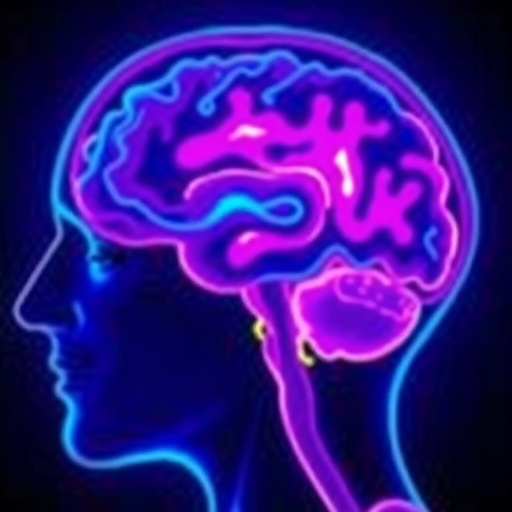Recent research led by esteemed investigators at Mass General Brigham has illuminated the complex and nuanced interactions of various physiological systems in our brain as it transitions from a state of wakefulness to sleep. Employing cutting-edge imaging technology, this study uncovers significant advancements in our understanding of brain dynamics during NREM (non-rapid eye movement) sleep, emphasizing how different brain regions remain active even as conscious awareness diminishes.
During the initial stages of sleep, particularly NREM sleep, the brain exhibits a remarkable shift in activity patterns. This research has discovered that while the brain’s higher cognitive processes associated with reflective thinking, memory consolidation, and daydreaming subside, other regions remain energized and engaged. Specifically, areas involved in sensory processing and motor functions stay alert, suggesting an intriguing balance between rest and responsiveness. This interplay is critical for understanding how our bodies adapt during sleep while still allowing us to react to external stimuli, which can trigger awakening as necessary.
The findings, published in Nature Communications, emphasize the energy dynamics within the brain during varying sleep stages. For instance, as one transitions deeper into NREM sleep, there is a notable decrease in both energy utilization and metabolism. Interestingly, while the brain’s higher-order cognitive networks quiet down, blood flow in sensory regions becomes increasingly dynamic. This suggests that while the brain may be resting on one level, it simultaneously maintains a form of vigilance, capable of responding to sensory cues from the surrounding environment.
Understanding these mechanisms is not just an academic exercise; it has profound implications for the field of neurology and the management of sleep disorders. Jingyuan Chen, PhD, who is a leading figure in this study, indicates that these insights may help unravel the complex underpinnings of various neurological and sleep-related conditions. By understanding how brain activity interrelates with energy metabolism and blood flow during sleep, researchers can pave the way for innovations in treatment modalities for conditions like insomnia, sleep apnea, and other sleep-related disorders.
Previous research has made strides in understanding the restorative roles of NREM sleep, often referred to as a deep, restorative stage crucial for physical health and brain function. However, the mechanisms by which NREM sleep contributes to long-term well-being and cognitive clarity have remained shrouded in uncertainty. Emerging theories posit that one fundamental role of NREM sleep is to facilitate the clearance of metabolic waste products from the brain—an idea further supported by this latest study.
The cutting-edge methodology employed in this research is notable. Investigators used a tri-modal EEG-PET-MRI technique that intricately combines electroencephalography (EEG) to assess brain activity, functional magnetic resonance imaging (fMRI) to visualize blood flow, and functional positron emission tomography (fPET) to monitor glucose metabolic rates. This innovative approach offers a multidimensional perspective of the changes occurring in the brain during sleep, revealing temporal coupling and spatial structuring that traditional methods may overlook.
The research involved 23 healthy adults participating in short afternoon sleep sessions, allowing for detailed observations of brain activity during the various phases of sleep. The results indicated a multi-faceted dynamic: as individuals drift deeper into sleep, not only does energy use decline, but there is also an increase in the dynamics of blood flow, specifically in areas sensitive to external stimuli. This delicate balance between quieting cognitive functions and maintaining sensory responsiveness stands as a crucial aspect of how sleep contributes to overall cognitive health.
Future research directions signal a commitment to building upon these significant findings. The authors of the study underscore the necessity of expanding the scope of future inquiries to include larger and more diverse participant demographics. Studies extending beyond brief sleep sessions into longer and deeper recordings will likely yield richer datasets, offering more comprehensive insights into the neurological underpinnings of different sleep stages.
In addition, researchers express intentions to refine the methodologies used for investigating brain metabolism, striving for a greater resolution in distinguishing between varying sleep stages. As these investigations progress, they could further elucidate the interplay between sleep architecture and cognitive processes, enhancing our comprehension of how sleep influences emotional regulation, memory consolidation, and the restoration of brain functionality.
This research marks a pivotal moment in the ongoing exploration of sleep sciences, linking fundamental physiological processes to broader implications in health and disease. The meticulous analysis of brain activity during sleep serves not only to inform clinical practices but also invites a broader dialogue on the significance of a good night’s sleep in supporting holistic health.
Ultimately, the revelations warm the hearts and minds of researchers and individuals alike, inspiring a renewed appreciation for the restorative powers of sleep and its intricate relationship with brain health. As we stand on the brink of new discoveries rooted in these findings, the future of sleep research promises to illuminate further the fascinating realm of our unconscious minds.
Amid growing recognition of the crucial role sleep plays in our lives, this study stands out not just as academic discourse but as a beacon for future explorations in neuroscience and the ongoing quest for better health outcomes. The integration of state-of-the-art technology, rigorous research methods, and a dedication to understanding the human brain continues to drive the boundaries of medical science closer to revealing the mysteries of our sleep.
Subject of Research: People
Article Title: Simultaneous EEG-PET-MRI identifies temporally coupled and spatially structured brain dynamics across wakefulness and NREM sleep
News Publication Date: 24-Oct-2025
Web References:
References:
Image Credits:




